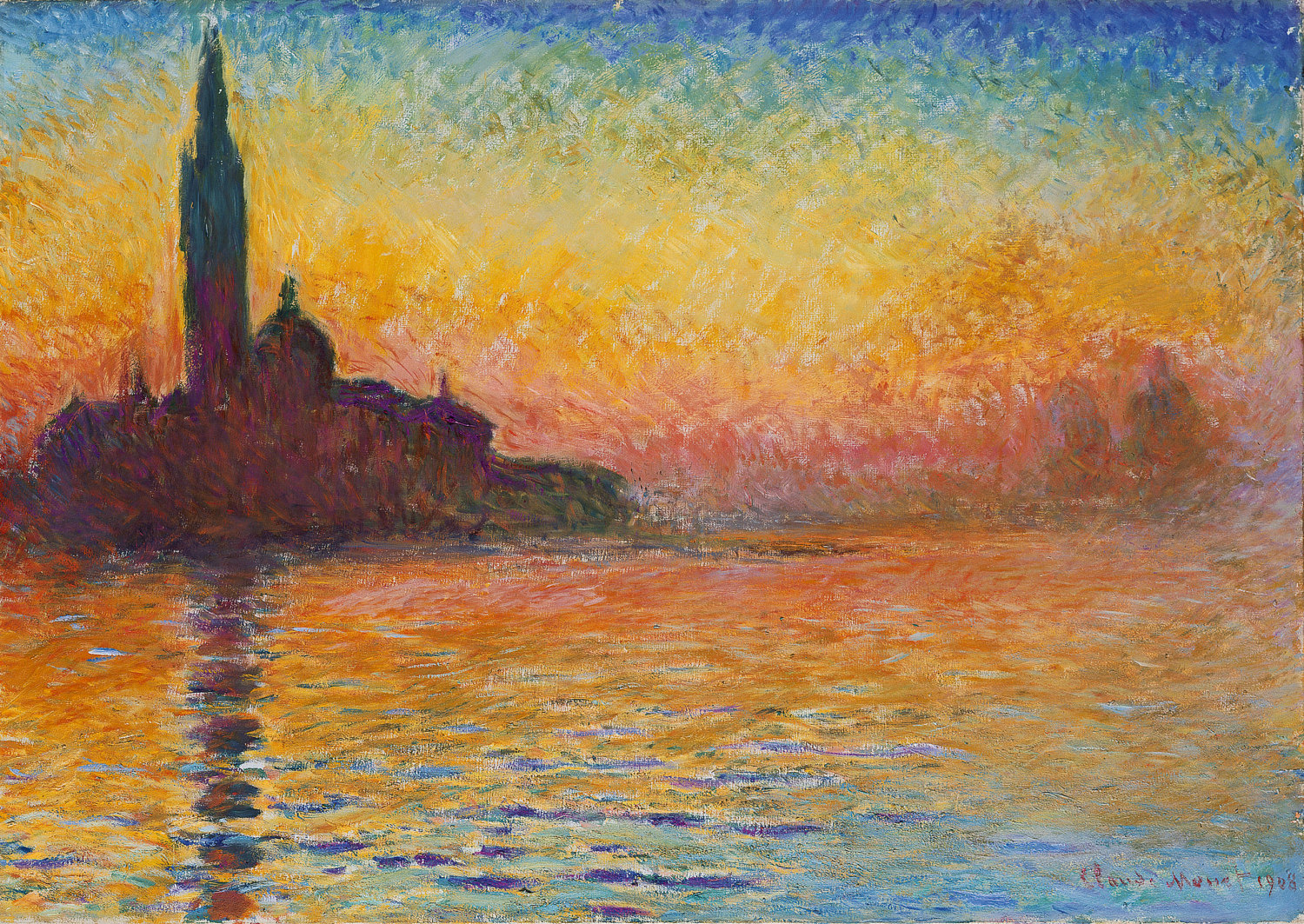Distance: 0, Yoga
I would like to paint the way a bird sings.
Claude Monet
Monet wasn't primarily interested in painting the beauty of nature; he wasn't after a beautiful painting. He was after nature itself, capturing it. He didn't see a sea or a cliff or even a water lily. He saw countless particles of myriad colors that comprise nature; a pink here, a deeper pink there, bright yellow, lilac, the glints of light and color that made up the whole.
 |
| San Giorgio Maggiore at Dusk, 1908 |
And it wasn't easy to see this way, to have this drive. As he said, "Color is my daylong obsession, my joy, my torment." In search of it he flirted with illness even death climbing rocks, standing in icy sea blasts of sea winds or snowstorms working as one of the first painters to ply his talents 'en plein air,' ie, outside - often all day.
 |
| Cart on the Snow Covered Road with Saint-Simeon Farm, 1865 |
The obsession was there from the beginning and manifested most dramatically in his series paintings. This practice of painting the same subject at different times of day began in earnest in the 1880's and continued until the end of his life in 1926. His most well known series included Mornings on the Seine, Houses of Parliament, Rouen Cathedral.
But probably the most significant series for him during these years was his 25 painting Haystack series from 1990-1991. Fifteen of these were the first to be exhibited as a series and were recognized as a breakthrough in French art. But most importantly for Monet, they were immediately popular. All the paintings in the show sold within days, and this set him free - at last! - financially. His reputation and prices rose steeply and he was able to buy outright the house and grounds at Giverny and start constructing a water lily pond. (NB: He was finally past subsistence living, but never a man to deny himself, he contiued to live at an economic edge. Another story in another CIWT).
No matter what his subject, Monet's underlying fascination in all his series was light, its intransience. He needed at the deepest level to capture that. Even knowing his quest was ultimately impossible, he would rise around 3:30 in the morning so as to see the first light, set up multiple canvases, then paint and move rapidly from one to another as the momentary light changed. This process was repeated day after day whatever the weather, sometimes for weeks or months until he deemed each canvas as complete as possible. As he said, "I'm never finished with my paintings; the further I get, the more I seek the impossible and the more powerless I feel."
Monet's series culminated of course in his great and most famous Water Lilies paintings. More on these in a future CIWT.

%2C_1890-91%2C_66_x_93_cm%2C_26_x_36_5-8%2C_The_Art_Institute_of_Chicago.jpg/150px-1281_Wheatstack_(Snow_Effect%2C_Overcast_day)%2C_1890-91%2C_66_x_93_cm%2C_26_x_36_5-8%2C_The_Art_Institute_of_Chicago.jpg)
%2C_1890-91%2C_65.3_x_100.4_cm%2C_25_11-16_x_39_1-2_in.%2C_The_Art_Institute_of_Chicago.jpg/150px-1278_Wheatstacks_(Sunset%2C_Snow_Effect)%2C_1890-91%2C_65.3_x_100.4_cm%2C_25_11-16_x_39_1-2_in.%2C_The_Art_Institute_of_Chicago.jpg)

No comments:
Post a Comment